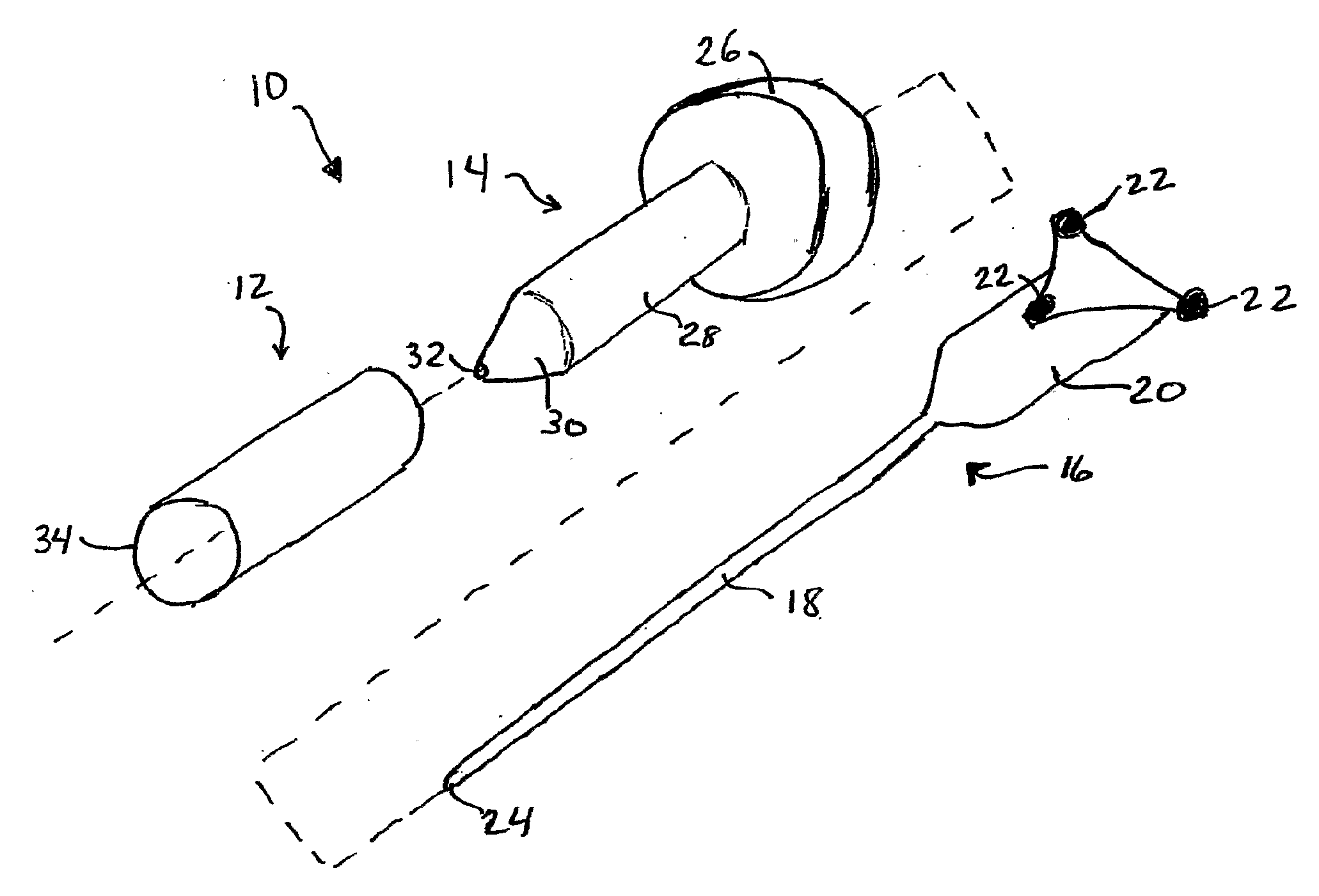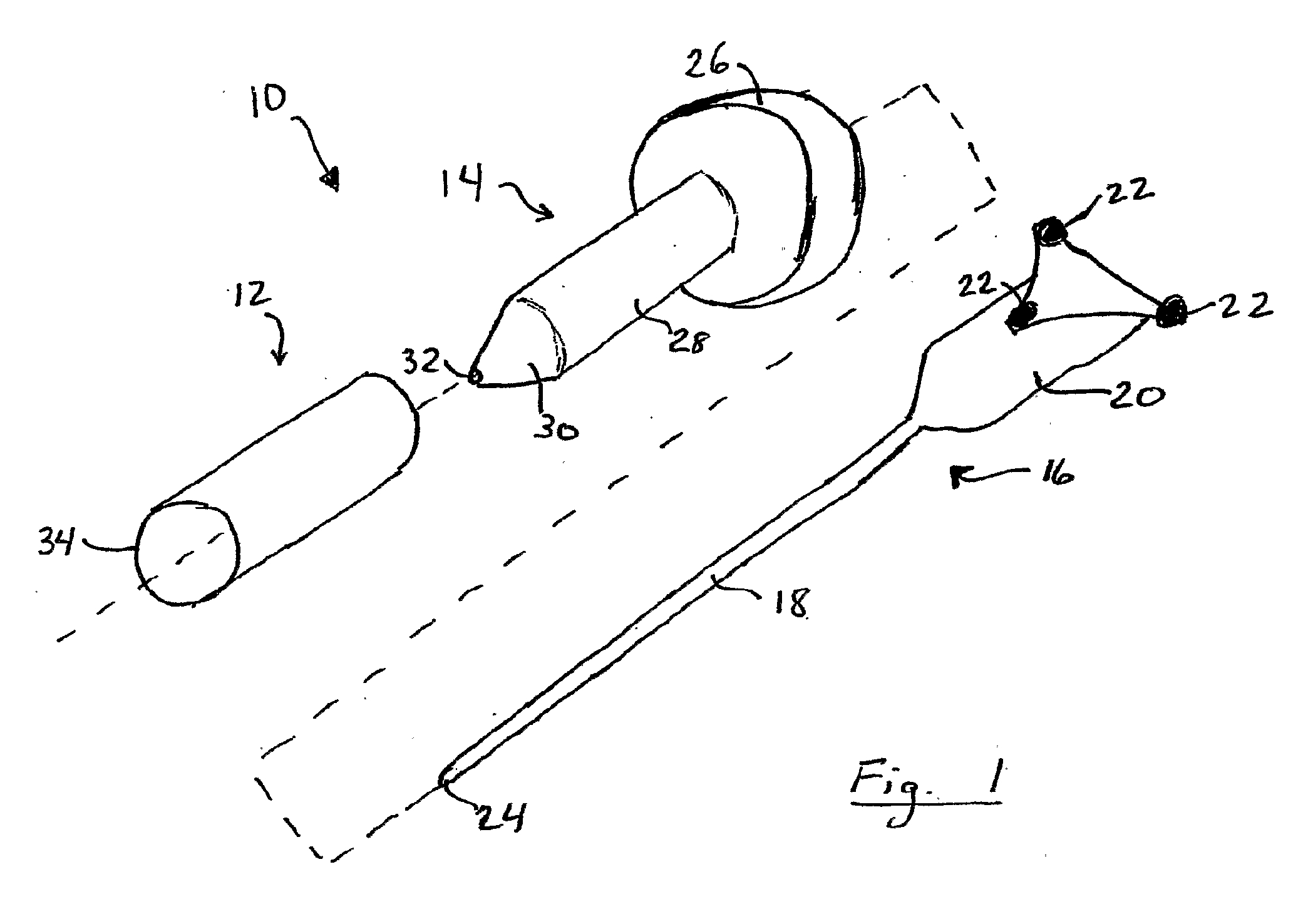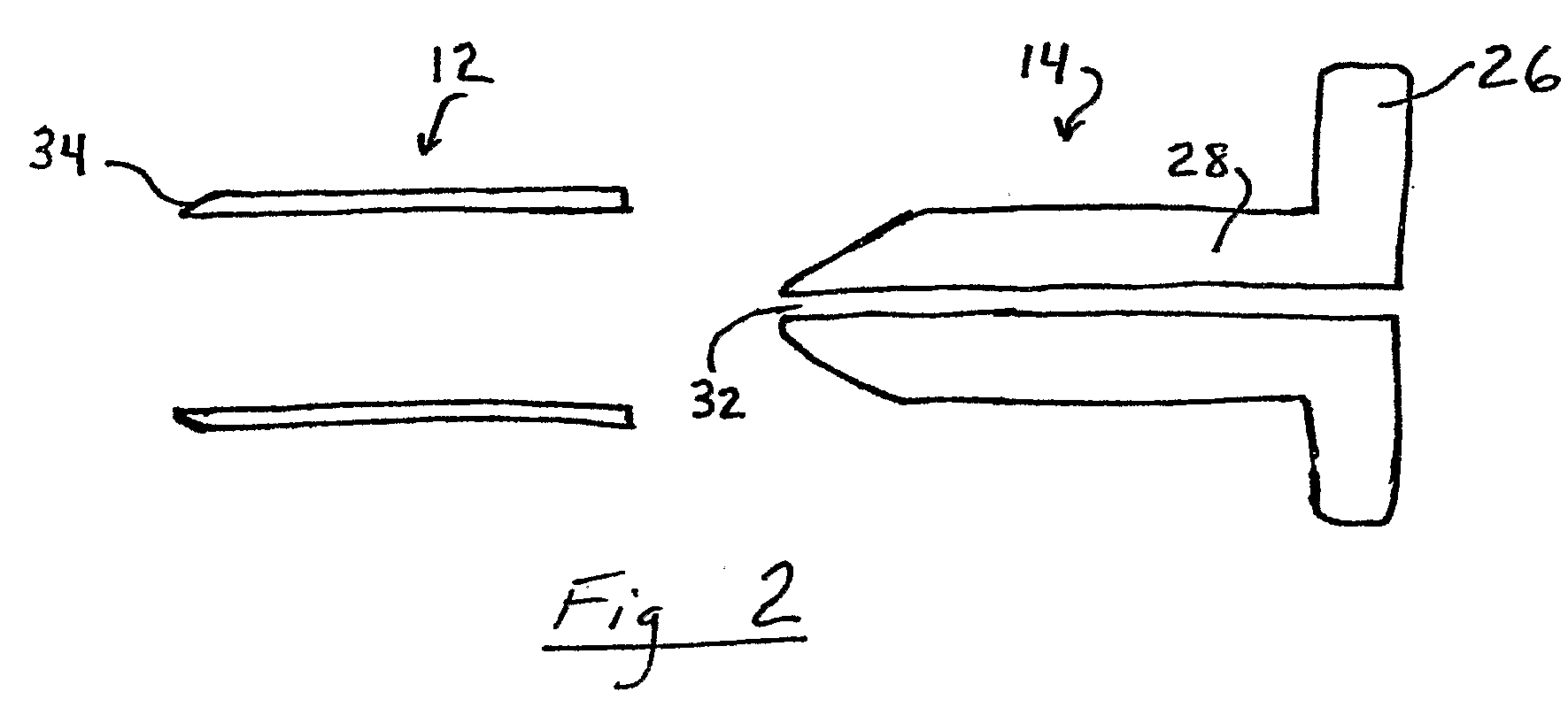Apparatus and Methods for Performing Brain Surgery
a brain surgery and apparatus technology, applied in the field of apparatus and methods for brain surgery, can solve the problems of high invasiveness of brain surgery, difficult diagnosis and treatment of brain conditions, and inability to adapt to all situations,
- Summary
- Abstract
- Description
- Claims
- Application Information
AI Technical Summary
Benefits of technology
Problems solved by technology
Method used
Image
Examples
first embodiment
[0032]Referring now to the drawings, FIG. 1 illustrates an apparatus 10 for accessing target tissue within the brain in order to perform brain surgery. The access device includes a cannula 12, a dilating obturator 14 and a stylet or probe 16. Stylet or probe 16 has a small diameter elongated shaft 18, a handle 20 and associated position indicators 22 for an image guidance system. Stylet shaft 18 has a blunt tip 24 that can be inserted into and advanced through brain tissue. In FIG. 1, image guidance position indicators are shown as infrared reflectors of the type use in connection with optical image guidance systems. As shown, the infrared reflectors used with such a system are mounted to the stylet handle in a customary triangular configuration calibrated to identify the tool to the image guidance system. Such imaging systems are available, for example Medtronic Surgical Navigation Technologies (Denver, Colo.), Stryker (Kalamazoo, Mich.), and Radionics (Burlington Mass.).
[0033]Typi...
third embodiment
[0039]FIG. 5 is a perspective view, with parts separated, of an access device 70 for brain surgery. Access device 70 includes cannula 72 with chamfered lead edge 74, and a dilating obturator 76. Dilating obturator 76 includes a handle 78, substantially cylindrical shaft 80 and dilating tip 82, which is preferably conical with a rounded distal tip. Access device 70 does not include apparatus for calibrating the position of the dilating obturator with an image guidance system or a stylet or probe for aiding insertion of the dilating obturator.
[0040]FIGS. 6-10 illustrate the use of the access device 10 of the first embodiment during minimally invasive brain surgery, as will now be described.
[0041]In FIG. 6, a partial cross-section view of the access device 10 with stylet shaft 18 of stylet 16 inserted through an opening 100 formed in a patient s skull 102 through brain tissue until tip 24 of stylet 28 is adjacent target tissue 104. Opening 100 is made in a traditional manner, by incisi...
PUM
 Login to View More
Login to View More Abstract
Description
Claims
Application Information
 Login to View More
Login to View More - R&D
- Intellectual Property
- Life Sciences
- Materials
- Tech Scout
- Unparalleled Data Quality
- Higher Quality Content
- 60% Fewer Hallucinations
Browse by: Latest US Patents, China's latest patents, Technical Efficacy Thesaurus, Application Domain, Technology Topic, Popular Technical Reports.
© 2025 PatSnap. All rights reserved.Legal|Privacy policy|Modern Slavery Act Transparency Statement|Sitemap|About US| Contact US: help@patsnap.com



